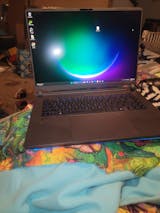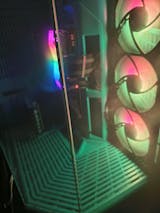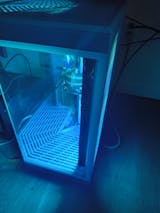An ultra-quiet computer is one of the main reasons why so many PC enthusiasts choose all-in-one liquid cooling kits or custom loop systems. However, liquid cooling can become stressful and quite costly in the long run. Any computer that is cooled with water or some form of coolant is at risk of leaking and wreaking some serious havoc on other core components and hardware. Water cooling may be the latest craze in PC customization, but many PC enthusiasts still swear by air cooling. Keeping air-cooled rigs quiet can be a bit of an uphill battle. Luckily, we have the know-how and experience to help you build a high-end rig for silent gaming. Keep reading to learn more!
Beginner’s Guide to Keeping Air-Cooled Rigs Quiet
At one point in PC time, liquid cooling was considered pure folly. Few enthusiasts could afford to take their chances with liquid-cooling hardware or components that weren’t necessarily compatible with a silicon environment. Although water cooling has quickly risen in popularity, you can enjoy all the same great benefits of silent operation by tweaking your rig’s air cooling system instead of spending a pretty penny. If your computer’s running a little loud, your fans are probably running at full speed. If your computer is custom-built, your fan speeds are probably not regulated. It is no surprise that a cool computer can also be a very loud computer, but there are several ways you can make it quieter.
Install a fan-controlling software: There are a wide variety of software programs that give you control over the fans, allowing you to choose how fast they run at any given time. Some programs can even monitor PC temperatures and adjust the fans accordingly. If your software can’t control all the fans, you may need to resort to setting adjustments.
Adjust BIOS settings: Most motherboards feature built-in fan control, but they lack the control that those previously mentioned programs provide. Basic input output system (BIOS) is the software that’s stored on a small memory chip in your PC’s motherboard. This software can be used to troubleshoot or change how your device works. To start, you should open up your BIOS settings and search for fan settings. After enabling this feature, you can adjust the settings accordingly. Some systems even allow you to set temperature thresholds or specific modes.
Invest in an external fan controller: External fan controllers are designed to fit into your computer’s drive bay, and they allow you to manually control the speed of each fan in your rig. As an alternative, you can invest in component specific fans for memory, graphics card, and so much more. You should always double-check whether your power supply unit (PSU) is operating efficiently. A hot computer can sometimes indicate a faulty PSU fan.
With a little work, you can make sure your computer fans run at lower speeds when you’re not using them. In addition to software, setting adjustments, and external solutions, we recommend that you clean and dust your PC on a routine basis with compressed air. You can also boost airflow in your case by organizing your cables.
Your cart is currently empty.
Start Shopping












